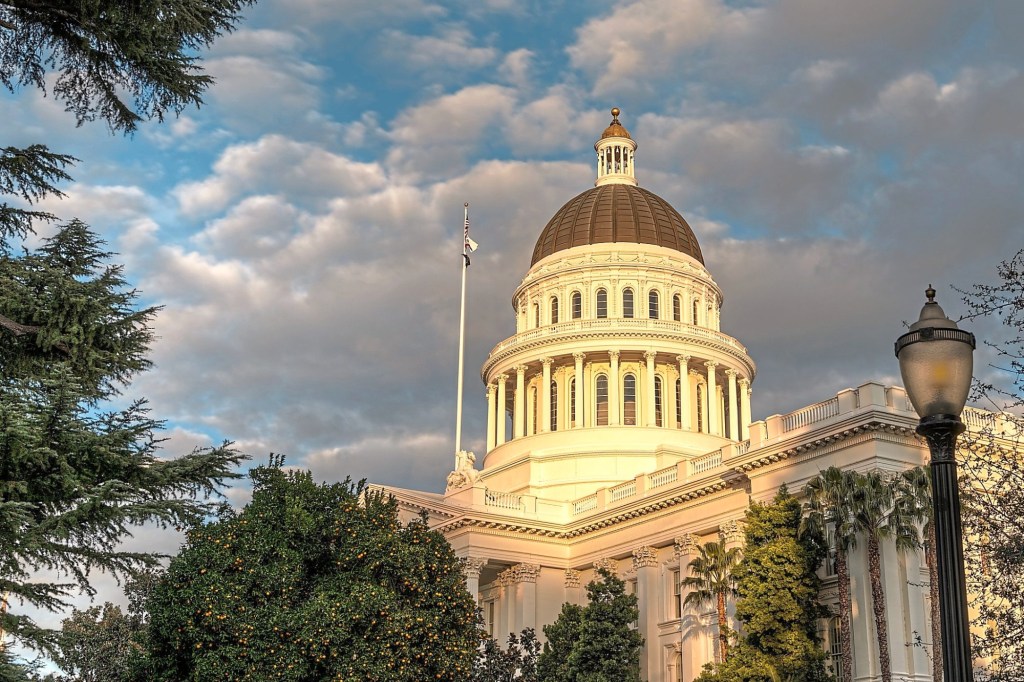

The nationwide Republican election trend was apparent even in the Democratic bulwark of California.
Though votes are still being counted, as of Tuesday it appeared eight counties that voted for Joe Biden in 2020 flipped to Donald Trump last week.
Vice President Kamala Harris, a former California senator and attorney general, won the state handily, but the margin of victory over Trump was about 10 points less than both Biden’s and Hillary Clinton’s in 2016.
Harris also easily prevailed in San Diego County, but by considerably less than Biden and Clinton.
Democrats are back on their heels in their effort to retake the House of Representatives, but that remains unsettled with several races still up in the air, including some in California. Regardless of how those elections end up, California has been central to the ebb and flow of the battle for the House in recent years.
An important caveat: About 2.5 million votes remain to be counted in the state as of Tuesday. Trends suggest the remaining tally will shift more Democratic, Paul Mitchell, vice president of the nonpartisan political data firm Political Data, Inc., told Politico.
Until the dust settles there, perhaps a truer barometer of where California is politically can be found in the results of statewide ballot propositions.
As of Tuesday, Californians were rejecting proposals to make it easier to pass local government bonds (Proposition 5), ban forced labor for inmates (Proposition 6), increase the minimum wage (Proposition 32 is very close) and lift a prohibition on local rent control (Proposition 33).
Famously, and overwhelmingly, the state’s voters passed tougher penalties for certain low- and mid-level crimes (Proposition 36) amid evident voter frustration with flash-mob-type commercial robberies, open drug use and increasing homelessness.
The New York Times, surveying the dynamics surrounding Proposition 36 and its nearly 40 percent winning margin, concluded “the state lurched rightward.”
That may be a bit overstated. But recent elections suggest that when it comes to crime, economics and quality of life ballot propositions, what would typically be seen as Republican positions also are held by a lot of Democratic voters — and some local, if not statewide, Democratic leaders.
Mayors Matt Mahan of San Jose and Todd Gloria of San Diego were leading voices in support of Proposition 36.
California still remains deep blue when it comes to the top-ticket races — including Rep. Adam Schiff’s landslide Senate victory over Republican Steve Garvey — and many Democratic core issues.
Voters also agreed to amend the state constitution to make clear that same-sex marriage is legal in the state (Proposition 3), pass a $10 billion bond measure to combat climate change and wildfires and improve water quality (Proposition 4), and approve $10 billion in bonds to improve school and community college facilities (Proposition 2).
The winning side on all those initiatives appeared to have bipartisan support, though not necessarily to equal degrees. But during these divisive partisan times, it’s important to stress that common ground still can be found.
At least going back to the 2020 election, a case can be made that California’s heavily Democratic electorate is more centrist than the state’s image on certain issues.
In fact, the Republican position — or at least the California Republican Party’s — was in sync with the majority of voters on key ballot measures four years ago.
Ballot proposals in 2020 that were rejected would have: raised property taxes on businesses (and altered Proposition 13), restored affirmative action, allowed expansion of rent control and eliminated cash bail.
Voters also approved letting app-based transportation companies employ workers as independent contractors.
On the losing side of those measures were numerous Democratic leaders and unions, suggesting on some issues, the party’s powerful entities are in a different place than substantial portions of their constituencies.
Political trends often are nuanced, though, and projecting them forward should be done with caution. Less than a year after those November 2020 ballot measures, Democratic Gov. Gavin Newsom easily defeated a recall attempt, in large part because the leading candidate to replace him was Larry Elder, a conservative, pro-Trump commentator.
(In 2022, Californians enshrined abortion protections and the right to contraception in the state constitution, which had broad support across the spectrum.)
Further, it appears Democrats will retain at least two-thirds supermajorities in the Assembly and state Senate, giving Republican lawmakers little leverage on key legislative decisions.
Like California’s see-saw in the House majority fight, public sentiment can be cyclical on issues of great public interest, particularly crime.
In 1994, voters overwhelmingly approved California’s tough “three strikes” sentencing law, which has since been modified.
In 2014, California voters approved Proposition 47, which reduced certain nonviolent crimes from felonies to misdemeanors amid court pressure to reduce prison overcrowding. Critics maintained the result was an increase in those crimes because the threat of prosecution and incarceration was reduced.
That led to this year’s Proposition 36 and coming tougher criminal sentences.
Crime has always been a cornerstone Republican issue, but it’s clear Democrats are starting to heed public sentiment, particularly given the nexus of homelessness with public safety and health concerns.
Similarly, Democrats became attuned to public frustrations with border security and chaotic immigration — which the GOP has long capitalized on — but their pivot to address those matters at the federal level appeared too late and, to critics, driven by election-year politics.
It may take a while for the full impact of the 2024 election in California to become clear — maybe two years.
If GOP candidates are still shut out of statewide offices in 2026 and if congressional Republicans lose ground in the Trump midterm elections, a lot of this talk about the rightward shift in California will be long forgotten.
But don’t forget to keep an eye on the ballot measures.







